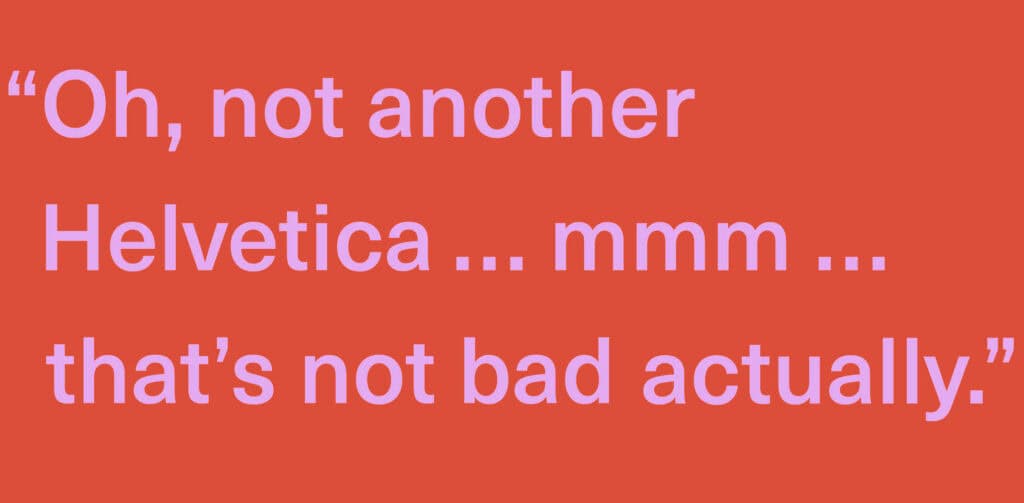This week, the Web went giddy at the knees over the release of Monotype’s Neue Haas Unica. The typeface is a redesign of Haas Unica, itself an attempt to fuse the better qualities of Helvetica and Univers.
Originally designed in the late ’70s and published in 1980 by the Haas type foundry. The design was mired in legal constraints and was subsequently lost. Discovered in storage, it was subsequently redesigned by Toshi Omagari of Monotype.
The reaction to Neue Haas Unica has been overwhelmingly positive with designers praising the subtle blend of character and precision. Certainly there’s no denying that at display sizes Neue Haas Unica is unbelieveably beautiful.
What’s more Neue Haas Unica has been drawn for the screen, in which process, many of the limitations that make Helvetica so poor as a UI face have been corrected. The design has a modernist simplicity that Apple would surely love to have uncovered when developing San Francisco.
A little more spacious, and a little rounder, than Helvetica, Neue Haas Unica is a very tempting grotesk to keep handy. It has 18 different fonts, the lightest of which is available free, the rest of which are available at a discount until 7th May. It also features extended language support, including Greek and Cyrillic.
As well as working for UI design, Neue Haas Unica is tolerable for body text, although there are certainly still better options available.
[pullquote]it couldn’t be more mid-century modern if it were sat in a Knoll armchair, in a Frank Lloyd Wright office building, sipping martinis with Don Draper[/pullquote]
Like its parents, Helvetica and Univers, Neue Haas Unica really excells at display sizes. It perfectly evokes modernism; in fact it couldn’t be more mid-century modern if it were sat in a Knoll armchair, in a Frank Lloyd Wright office building, sipping martinis with Don Draper.
And that may be Neue Haas Unica’s single undoing. Like an ad-exec who’s just bought his first pair of skinny jeans and started growing a beard, Neue Haas Unica may find that particular boat has sailed. Whilst Neue Haas Unica is beautiful in its own right, it evokes both the design of the 1950s, and the spirit of 1980s corporate America, but it does it so well, that it’s hard to see it working in any other context.
It’s a truth universally acknowledged, that we only want what we can’t have. For over a decade web designers struggled to make gradients work, even going as far as relying on site-bloating transparent pngs; as soon as CSS3 introduced gradient support in browsers, we embraced flat design.
It seems like for the past decade foundries have been searching for the Holy Grail of alternative geometric sans serifs to the old staples. Unica got there first. — Stefanie Weigler & David Heasty
Perhaps we craved a successful grotesk face for the Web, only so long as we didn’t have one. If it had been released five years ago it would certainly be the sans serif of choice, but whether Neue Haas Unica survives longer than its non-Neue predecessor, we’ll have to wait and see.
